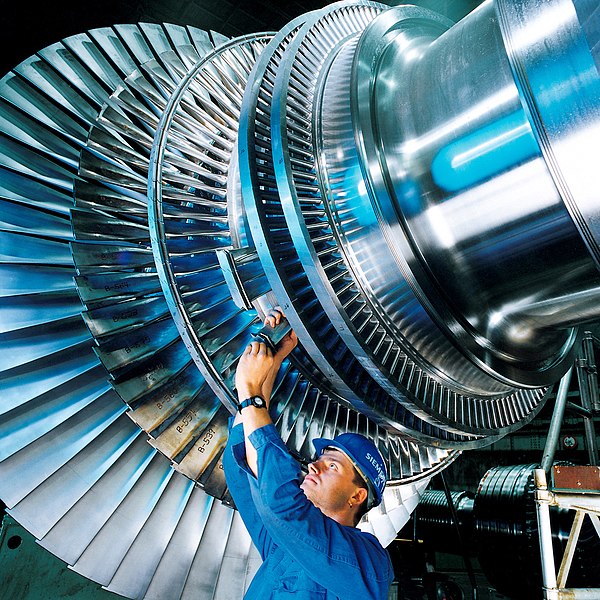The Rankine cycle is an idealized thermodynamic cycle describing the process by which certain heat engines, such as steam turbines or reciprocating steam engines, allow mechanical work to be extracted from a fluid as it moves between a heat source and heat sink. The Rankine cycle is named after William John Macquorn Rankine, a Scottish polymath professor at Glasgow University.
Rankine cycle with superheat
Rankine cycle with reheat
Regenerative Rankine cycle
A steam turbine is a machine that extracts thermal energy from pressurized steam and uses it to do mechanical work on a rotating output shaft. Its modern manifestation was invented by Charles Parsons in 1884. Fabrication of a modern steam turbine involves advanced metalwork to form high-grade steel alloys into precision parts using technologies that first became available in the 20th century; continued advances in durability and efficiency of steam turbines remains central to the energy economics of the 21st century.
The rotor of a modern steam turbine used in a power plant
A 250 kW industrial steam turbine from 1910 (right) directly linked to a generator (left)
The first steam turbine-powered ship Turbinia: fastest in the world at that time
A steam turbine without its top cover







